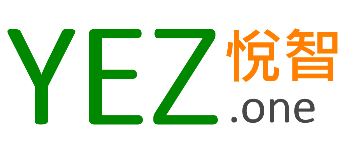步驟1: 概念發展與草圖繪製
工業設計師以客戶端產品經理所制定的規格為基礎,開始構思設計概念,並以各種繪圖工具快速的發展各種面向的造型。在這個階段設計構想求快、求多,找尋符合特色的各種可能性。在這之前,有一個更重要的工作: 腦力激盪會議。產品經理(PM, Product manager)必須召開多次的產品會議,為新產品制定為市場所接受的賣點。接下來,設計師便以此市場規格書(MRS, Marketing Requirement Spec.)為基礎,開始構思如何在造型與功能之間取得一個平衡點。草繪圖面不拘形式,只要能表達概念,彩色、或黑白都廣為使用,素描用的鉛筆是不錯的選擇。
Step 1: Concept Sketches
The designer starts to develop design concept based on specification defined by product manager on customer side. The customer held brainstorming meeting many times to come up with product positioning for defining clear marketing specifications. Those conclusions will be the design guideline for designers’ reference in step 1. At this stage, designer offers variety of shapes for seeking optimized shape. The result is offering rough sketches in thumbnail size speedy, as many as possible. Most of the cases, pencil is a good choice regardless it is colorful or monochrome.

步驟2: 3D立體建模
光靠設計師的草繪或者2D的圖面,客戶很難想像或者理解設計的精髓。這時候,3D繪圖就可以派上用場。現在市面上有許多軟體可以選擇,比如: Pro/E, Solidworks, Alias Studio, Rhino...等,用來建構實體的曲面建模。當建模完成,也代表產品的長、寬、高尺寸大小正式決定了。
Step 2: 3D modeling
It is hard to image what the design really look through 2D sketches. Normally designers use 3D modeling software to create model for example, Pro/E, Solidwork, Alias Studio or Rhino…etc. to build the surface of the design in solid-form. Once the dimensional shape is created, the whole dimension is decided.

步驟3: 機構設計
前一個步驟的3D建模只是把,外型初步的描繪出來,但工作還沒結束。機構工程師必需把所有的零件包括: 機構件(塑膠的、金屬的)、電子、或其他所必須的模組、部品,全部都組立起來,並檢查彼此間是否有干涉? 動作件是否運動順暢? 組立間隙是否跟當初設計所預期的一致? 機構工程師也必須把前一個步驟所繪製的實體圖面根據實際的設計圖來拆件,並把它薄殼化。更進一步的,要加上肋、螺絲柱、孔位、卡勾、拔模角...等。這部份的工作是整個機構設計的核心。
Step 3: Mechanical Design
The mechanical engineer needs to put all components together, includes plastic, electronics, modules…etc. The purpose is to simulate if all of the components work together smoothly as expected. To check any interference exists between parts. To fix all components are well installed inside the products firmly, so shell-form will be created instead of solid-form in step 3. More than that, adding ribs, bosses, holes, snaps, draft angle is another key issue in this stage.

步驟4: 模型製作
在產品正式量產之前,模型是可以讓使用者實際觸摸、操作功能的唯一途徑。一旦機構圖面設計完成,模型工廠可以依照3D的成品圖面配合CAM軟體與CNC加工機直接在塑膠或金屬材料上加工。CAM軟體實際上是由電腦下刀具路徑指令給CNC(GM碼),再對工件做移除材料的動作。接下來把CNC完成切削的工件再進一步精修、拋光,並依客戶所提供的色彩計劃書之指示予以分件塗裝、印刷後就可以完成組立。
Step 4: Mock-up Manufacturing
Mock-up is the only way to real touch and feel the design before making production. Once the mechanical design drawing is done, workshop uses CNC to sculpt the plastic or metal block by using CAM software like CIMATRON, MasterCAM, PowerMILL…etc. When the raw parts are done, they need to be polished or textured, then processing the painting by following CMF(Color, Material, Finish) document. Of course, silk printing will be applied in the end of the process.


步驟5: 模具開發
大部份的現代消費性產品都是使用熱塑性塑膠。實際運作時,是把加熱後的融熔塑料透過射出成型機以高壓、高速射入公、母模內所形成的空間,就是我們所需要的成品。模具所使用的鋼材種類繁多,一般常見的材料如: S50C, P20, NAK80 or SUS420...等。當模具圖面繪製完成後,許多工作就開始同步、或序列進行,包括CNC切削、線切割、放電加工、拋光、咬花與最終的組立。設計師可以指定產品的任何區域有不同的紋路,一般國際上普遍使用美國MOLD-TECH的MT系列咬花板為標準。
Step 5: Tooling Development
Majority of modern consumer products uses thermal plastic. Melted plastic is injected into the space between cavity and core side of the tooling. S50C, P20, NAK80 or SUS420 steel is very common to use in this industry. After tooling drawing is created, several stages are simultaneously developed, CNC milling, wire-cut, EDM, polishing, texturing and final assembly. You can specify any area on tooling with mirror polish or texture, MOLD-TECH is well-known for texture standard.

步驟6: 射出成型
ABS, PC, PC+ABS or PMMA...等,都是極為常見的熱塑性塑料。利用塑膠來射出成型是目前最有效率、成本最低廉的大量生產工法之一。小從手機上的一個按鍵,使用具備100噸鎖模力的射出成型機,大至一個汽車所使用的保險桿或門內飾板,1,000噸的射出成型機也不嫌太小。至於顏色,任何你所想要的色澤大部份都可以做到,潘通色票(PMS, Pantone Matching System)是目前全世界廣為流通的標準。
Step 6: Plastic Injection
ABS, PC, PC+ABS or PMMA are all thermal plastics. It is the most easy and economic way today to make mass-production in large volume. For a small push button on mobile phone, injection machine with 100 tons of clamp force will be used, and for a tremendous large size like car bumper or door trim, 1,000 tons is just fit. You can assign any color you want. Pantone Matching System is an international standard that well accepted anywhere.



步驟7: 量產組立
在21世紀的今天,美國福特汽車在1927年所創立的生產線組裝仍然證明非常完美有效。裝配人員坐在生產線上,按照作業指導書的指示完成每一站工位的動作來完成整個產品的組立、包裝、測試、品管並完成出貨。
Step 7: Production and Assembly
Until today, mass-production through assembly line still works perfectly since Ford motors phased in this system into their factory in 1927. The labors sitting in front of assembly line follow the SOP instructions to complete the whole thing station by station. From a small electronic component welding on PCB through completed product under critical quality check then put into a carton, prepare to ship anywhere on planet.

 完成! Done
完成! Done
大家可以參考貼圖的照片與文章做一個比對,想像一個產品是如何從創意的激發、工業設計、模具開發到量產製造。以上經過簡化的產品開發七步驟只是一個概略指導,但幾乎涵蓋現在大部份的工業產品,絕對具有參考價值。You can refer to the photos to realize how a product was created from an idea inspiration, design, tooling develop through production. Above 7 simplified steps are only a guideline but fits to most of the industrial products. It's definitely with the value for you to take a look.
